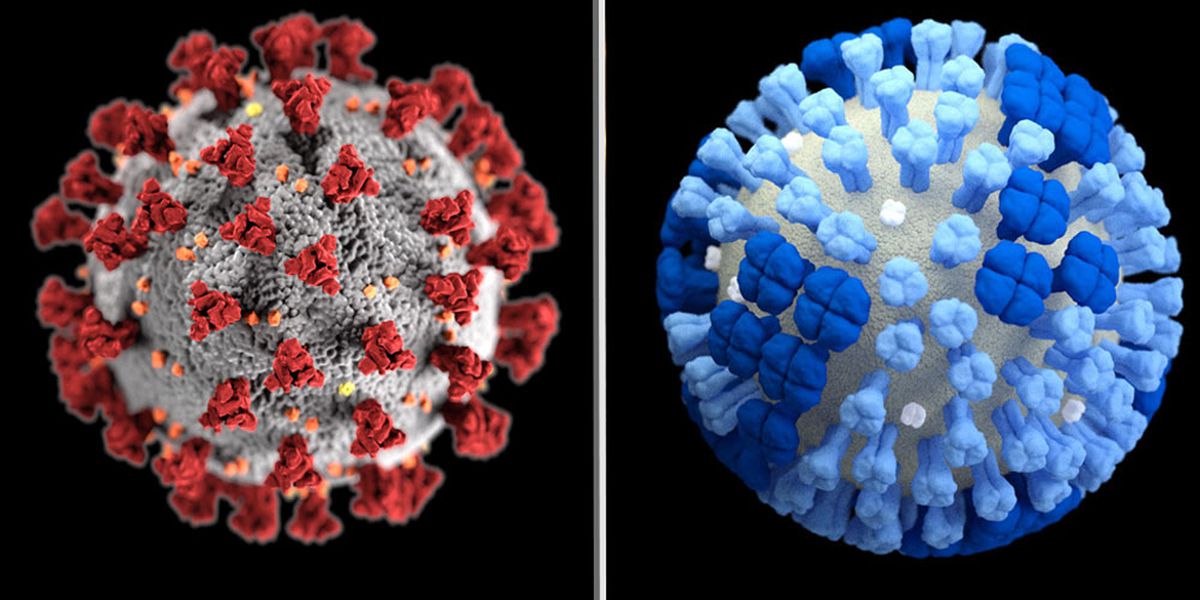
This article was reviewed by Lisa Lockerd Maragakis, M.D., M.P.H., and originally appeared on hopkinsmedicine.org
Influenza (the flu) and COVID-19, the illness caused by the coronavirus that’s led to the current pandemic, are both infectious respiratory illnesses. Although the symptoms of COVID-19 and the flu can look similar, the two illnesses are caused by different viruses.
Lisa Maragakis, M.D., M.P.H., senior director of infection prevention at Johns Hopkins, explains how the flu and COVID-19 are similar and how they are different.
Similarities: COVID-19 and the Flu
Symptoms
- Both cause fever, cough, body aches, fatigue, and congestion or runny nose; sometimes vomiting and diarrhea. The full list of symptoms of COVID-19 continues to evolve as more is learned about the illness.
- Can be mild or severe, even fatal in rare cases.
- Can result in pneumonia.
Transmission
- Both can be spread from person to person through droplets in the air from an infected person coughing, sneezing, or talking.
- A possible difference: COVID-19 might be spread through the airborne route (see details below under Differences).
- Both can be spread by an infected person for several days before their symptoms appear.
Treatment
- Neither virus is treatable with antibiotics, which only work on bacterial infections.
- Both are treated by addressing symptoms, such as reducing fever. Severe cases may require hospitalization and support such as mechanical ventilation.
Prevention
Both may be prevented by frequent, thorough hand washing, coughing into the crook of your elbow, staying home when sick and limiting contact with people who are infected. Physical distancing can limit the spread of COVID-19 in communities.
Differences: COVID-19 and the Flu
Cause
COVID-19: Caused by one virus, the novel 2019 coronavirus, now called severe acute respiratory syndrome coronavirus 2, or SARS-CoV-2.
Flu: Caused by any of several different types and strains of influenza viruses.
Transmission
While both the flu and COVID-19 may be transmitted in similar ways (see the Similarities section above), there is also a possible difference: COVID-19 might be spread through the airborne route, meaning that tiny droplets remaining in the air could cause disease in others even after the ill person is no longer near.
Antiviral Medications
COVID-19: Antiviral medications and other therapies are currently being tested to see if they can address symptoms.
Flu: Antiviral medications can address symptoms and sometimes shorten the duration of the illness.
Vaccine
COVID-19: No vaccine is available at this time, though development and testing are in progress.
Flu: A vaccine is available and effective to prevent some of the most dangerous types or to reduce the severity of the flu.
Complications
COVID-19: Lasting damage to the lungs, heart, kidneys, brain, and other organs is possible after a severe case of COVID-19.
Flu: Influenza complications can include inflammation of the heart (myocarditis), brain (encephalitis) or muscles (myositis, rhabdomyolysis) tissues, and multi-organ failure.
Infections
COVID-19: The first cases appeared in China in late 2019 and the first confirmed case in the United States appeared in January 2020.
Approximately 18,316,072 cases have been confirmed worldwide. There have been 4,718,249 cases in the U.S. as of August 4, 2020.*
Flu: The World Health Organization estimates that 1 billion people worldwide get the flu every year.
In the U.S., for Oct. 1, 2019 – Apr. 4, 2020, the CDC estimates that there were 39 million to 56 million cases of flu. (The CDC does not know the exact number because the flu is not a reportable disease in most parts of the U.S.)
Deaths
COVID-19: There have been approximately 694,715 deaths reported worldwide. In the U.S, 155,478 people have died of COVID-19, as of August 4, 2020.*
Flu: The World Health Organization estimates that 290,000 to 650,000 people die of flu-related causes every year worldwide.
In the U.S., from Oct. 1, 2019 – Apr. 4, 2020, the CDC estimates that 24,000 to 62,000 people died from the flu. (The CDC does not know the exact number because the flu is not a reportable disease in most parts of the U.S.)
The COVID-19 situation is changing rapidly. Since this disease is caused by a new virus, people do not have immunity to it, and a vaccine may be many months away. Doctors and scientists are working to estimate the mortality rate of COVID-19, but at present, it is thought to be substantially higher than that of most strains of the flu.
*This information comes from the Coronavirus COVID-19 Global Cases map developed by the Johns Hopkins Center for Systems Science and Engineering.





I found this article interesting:
https://wattsupwiththat.com/2020/08/04/npr-mounting-evidence-suggests-covid19-not-as-deadly-as-thought/